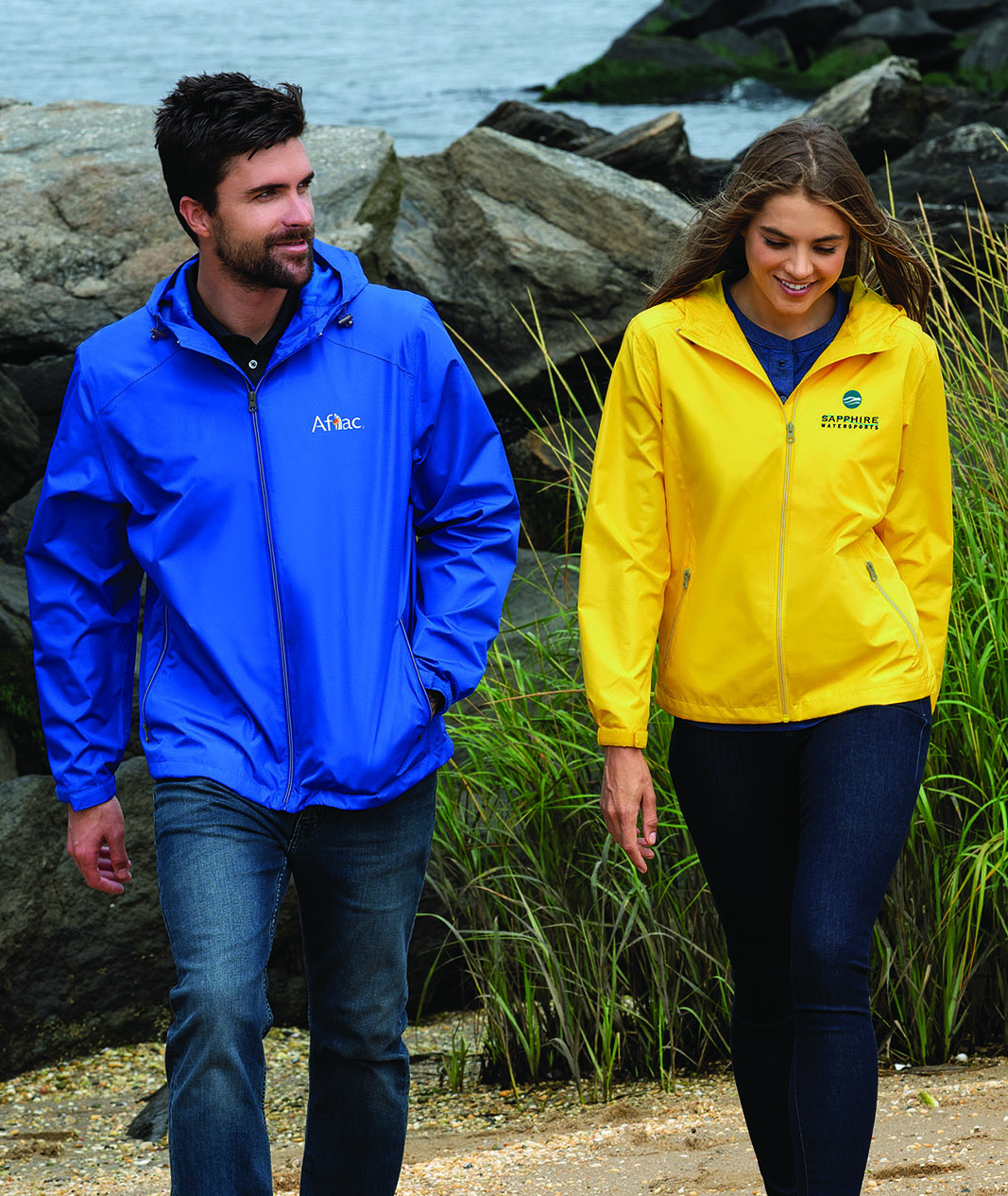In August, Robinhood, the stock trading and investing app, gave investors a chance to ask questions during its second-quarter earnings call. Typically, this is where shareholders would inquire about a company’s financial outlook and growth plans, but Robinhood investors weren’t interested in all that boring money stuff. They were there for the branded merch.
Specifically, they were there for hoodies. Of the 1,300 questions investors submitted before the call, the fifth most popular (by total votes) was this: “As initial investors, can we get a Robinhood hat and hoodie jacket?” And while the company said it didn’t yet have any plans in this area, we can gather some crucial market intelligence from the question itself: people really love hoodies.
Indeed, the jackets and outerwear product category remains one of promo’s most popular. Just about every lifestyle brand with an Instagram and a Shopify store has at least one hoodie for sale, and corporate customers across industries are still looking to outfit employees (even remote ones) in branded jackets for various functions.
For promo distributors, that means loads of opportunity. But there are two big obstacles standing in the way of jackets and outerwear sales: a changing market still rebounding from the pandemic, and a shaky supply chain that’s making product pricie≥r and harder to find. Let’s take a look at both of those challenges and explore some ways to address them on your way to hoodie jacket glory.
Buyer Trends
Recovery on the corporate side has been slow, especially with the Delta variant scuttling office reopening plans before employees even had a chance to dust off their cubicles.
“Though many distributors are ready to ramp up their offerings again, corporate promotions seem to still be in slight holding pattern, with many marketing managers waiting for some of the unknown variables of the pandemic to be worked out before they make their final promotional decisions,” said John Hein, sales and marketing manager for Landway International, Hayward, Calif.
But slow is still an improvement over this time last year, when the pandemic unknowns were even more, well, unknown. Hein said that despite the ongoing uncertainty from corporate buyers, jacket demand is definitely moving in the right direction, with Landway expecting “generous” growth into 2022.
Gina Barreca, director of marketing for Vantage Apparel, Avenel, N.J., is seeing a similar trend. Jacket sales are rising as corporate customers return to larger uniform buys and on-demand web stores, she said. For Vantage, this has led to an increase in orders for lightweight windbreakers and performance pullovers, in particular.

As jacket sales pick back up, consumer trends are worth watching as well. Barreca said the “buy less, buy better” mindset is making its way from retail to promo. That’s good news for the jackets and outerwear category, as many of these products are naturally higher-quality, higher-value items that end-users tend to keep for longer, fitting nicely in the “buy less” movement.
Hein has seen the same kind of shift, with consumers moving toward comfort and functionality over brand-name status alone. It’s been enough to drive promotional purchasing behavior, too.
“Buyers still want to impress, but they want to know that what they’re ordering or putting in a program will be of high quality and in stock when they want it,” he said. “If they can get something that is very well made, consistently in stock and affordable, they’ll be more than satisfied.”
That’s not to say that style doesn’t matter. It does—it’s just no longer the only (or even the main) consideration for a growing contingent of buyers.
“There are the common questions we’re all familiar with: soft shell versus outdoor jacket, hoodie versus fleece, cotton versus polyester,” Hein said. “But, style is important—you want something that fits their brand and is also useful to their employees. Are you looking for something with a professional look and a utility chest pocket, or are you looking for something more casual with a hood that they might turn to on a lazy Sunday? There’s something out there that fits everyone’s needs without sacrificing style. You just have to look.”
Supply Chain
Of course, staying up on jackets and outerwear market trends only matters if you can actually find product for your customers and get it into their hands on time. And with pandemic-driven supply chain issues only worsening as 2021 has progressed, that’s been the major pain point for distributors.
For jackets, specifically, Hein said transit times and shipping prices are “significantly” higher than at the beginning of the year. And while Landway has thus far been able to avoid price increases, other suppliers have had no choice but to charge more as shipping and manufacturing costs keep rising.
Inventory remains a major industry-wide challenge as well, though most suppliers are going to great lengths to keep product in stock or offer alternative solutions for their distributor customers.

“We try and keep our top-selling items consistently well stocked and available at really affordable prices,” said Hein. “If a color or size is out of stock on our most popular styles, our backorders are usually filled within two to four weeks. If we can make recommendations for a replacement item, we accommodate our distributors’ needs as best we can. Right now, heading into the fall and winter, we have ramped up production and are receiving containers delivering product to our warehouse on a consistent basis.”
Supply issues are frustrating, and they’re certainly costing distributors time and money. There’s no easy fix when every stage of the global supply chain is stretched to its breaking point through a once-in-a-century confluence of outside forces. But there are a few things distributors can do to keep jacket and outerwear sales moving.
“Branch out from your regular apparel offerings,” Hein suggested. “Check out some other suppliers out there in the industry that may offer a superior value to your clients. Have a backup in case you run into some stock issues this winter. Have a couple suggestions for clients on hand and show something different that they may not be familiar with. [And] use your sales reps to the fullest. They are there to serve you, so ask for samples, ask for suggestions and ask for meetings to show what’s new.”



